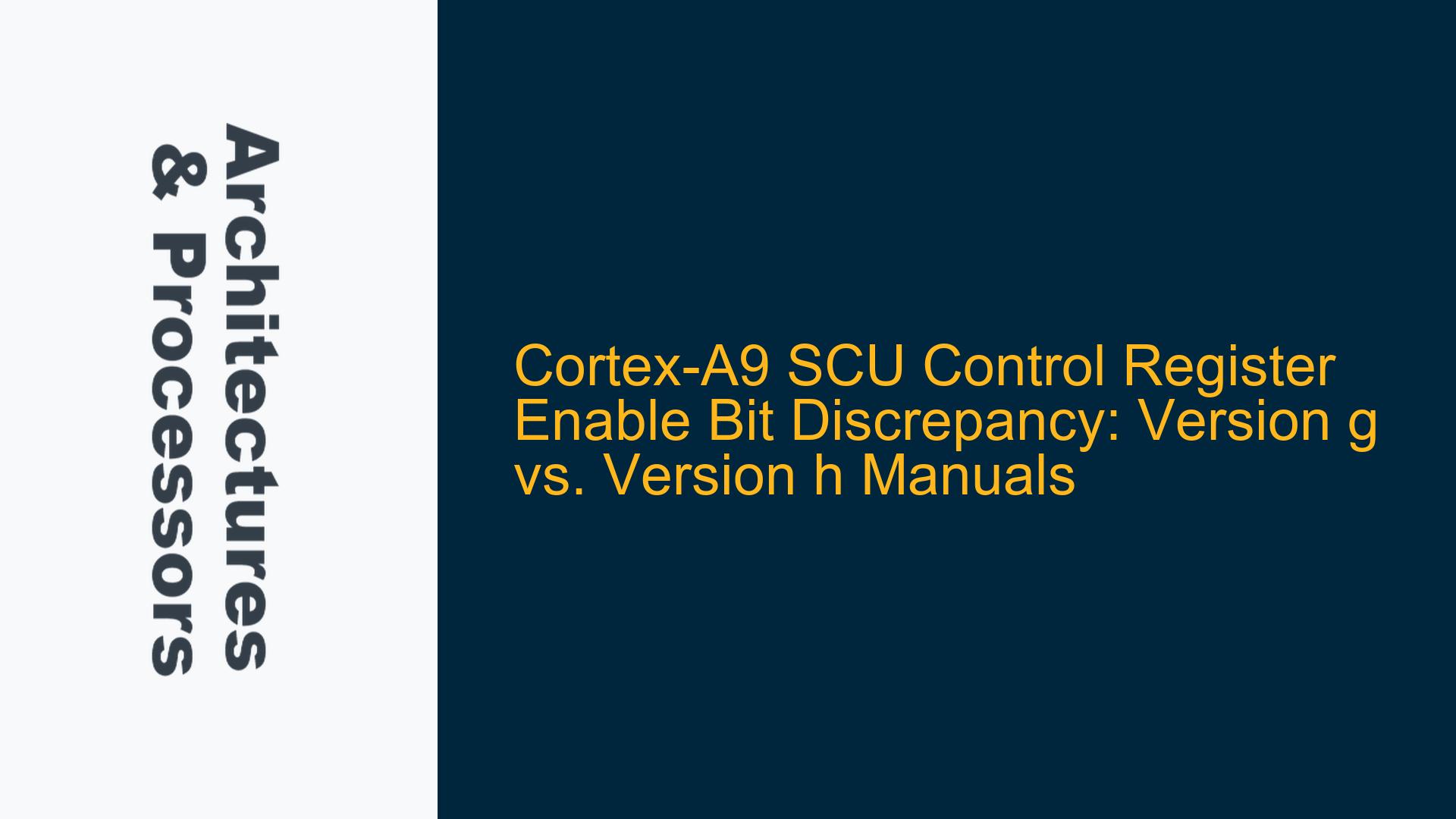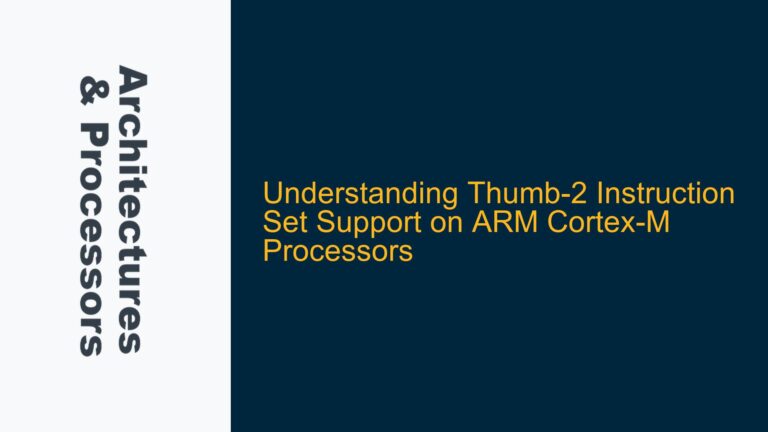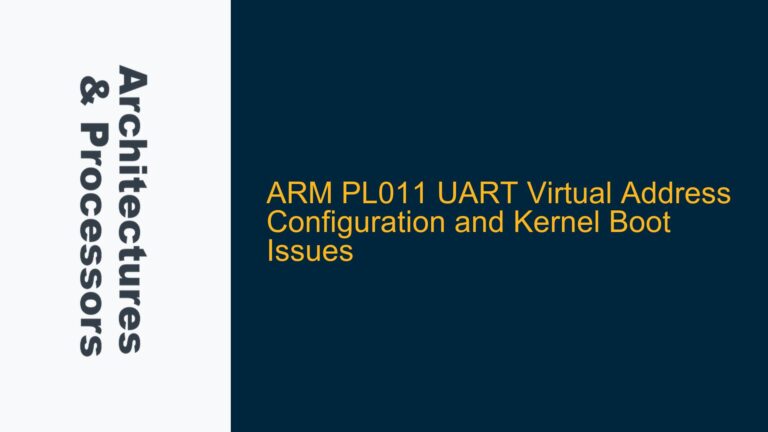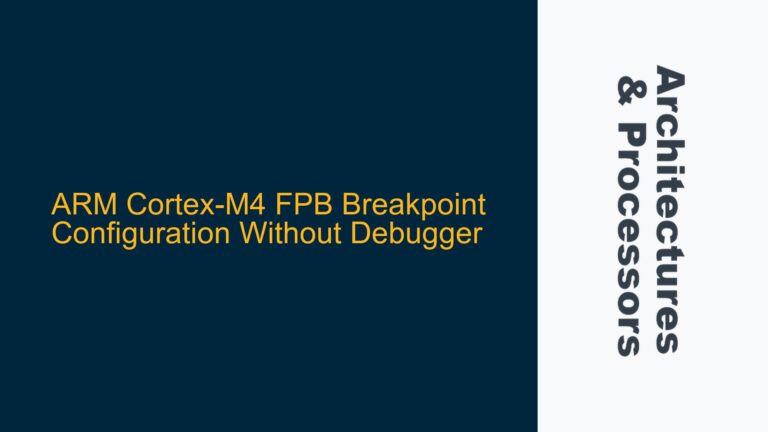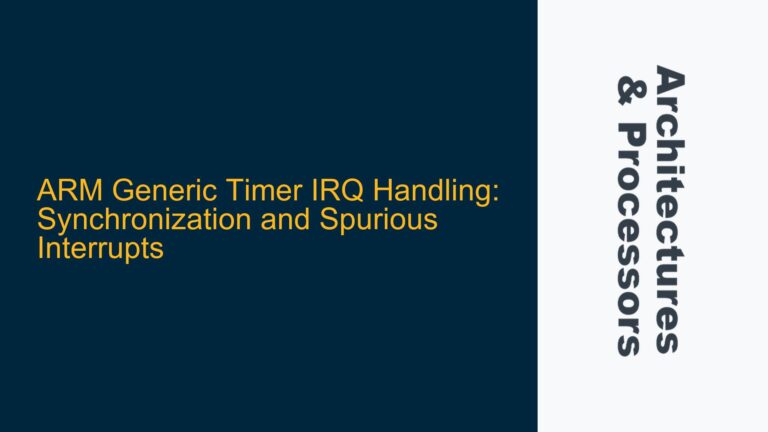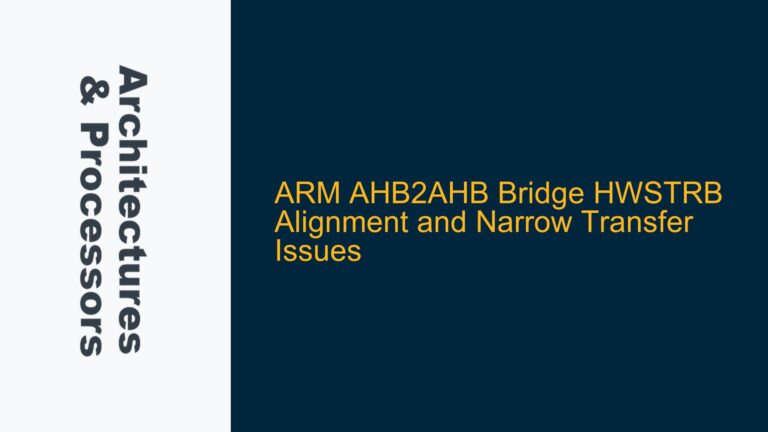Cortex-A9 SCU Control Register Enable Bit Behavior Inconsistency
The Cortex-A9 MPCore Technical Reference Manual (TRM) has undergone revisions, and a critical discrepancy has been identified in the description of the Snoop Control Unit (SCU) Control Register’s enable bit (Bit 0). In Version g of the manual, Bit 0 is described as enabling the SCU when set to 1 and disabling it when set to 0. However, in Version h (specifically Revision r4p1), the behavior is inverted: Bit 0 enables the SCU when set to 0 and disables it when set to 1. This inconsistency is not documented in the revision history of the manual, leading to confusion among developers and engineers implementing or debugging systems based on the Cortex-A9 architecture.
The SCU is a critical component of the Cortex-A9 MPCore, responsible for maintaining cache coherency across multiple cores. Misconfiguring the SCU can lead to severe system-level issues, such as cache incoherency, data corruption, and unpredictable behavior in multi-core systems. Understanding the correct behavior of the SCU Control Register is essential for ensuring reliable system operation.
Documentation Version Mismatch and Bit Interpretation Errors
The root cause of this issue lies in the discrepancy between different versions of the Cortex-A9 MPCore TRM. Specifically, the documentation available on developer.arm.com appears to be outdated, while the correct and updated documentation is hosted on infocenter.arm.com. The newer version of the TRM (Version h, Revision r4p1) clarifies that Bit 0 of the SCU Control Register enables the SCU when set to 1 and disables it when set to 0. This correction aligns with the actual hardware behavior of the Cortex-A9 MPCore.
The absence of this change in the revision history of the manual exacerbates the issue, as engineers relying on the older version of the documentation may inadvertently misconfigure the SCU. This misconfiguration can lead to system instability, particularly in multi-core implementations where cache coherency is paramount. Additionally, the lack of a clear errata or notice regarding this change further complicates the debugging process for engineers encountering unexpected behavior.
Verifying SCU Control Register Configuration and Ensuring Correct Documentation Usage
To address this issue, engineers must take the following steps to verify the correct configuration of the SCU Control Register and ensure they are using the appropriate version of the Cortex-A9 MPCore TRM:
-
Confirm Documentation Version: Always refer to the latest version of the Cortex-A9 MPCore TRM available on infocenter.arm.com. The correct behavior of the SCU Control Register’s enable bit is documented in Version h (Revision r4p1), where Bit 0 enables the SCU when set to 1 and disables it when set to 0. Avoid relying on outdated versions of the manual, such as those hosted on developer.arm.com.
-
Validate SCU Control Register Configuration: During system initialization, explicitly verify the value of the SCU Control Register’s enable bit. This can be done by reading the register and ensuring that the bit is set according to the desired configuration (1 for enable, 0 for disable). Use debug tools or hardware probes to confirm that the register is being written correctly and that the SCU is functioning as expected.
-
Check for Cache Coherency Issues: If the SCU is misconfigured, cache coherency issues may manifest as data corruption or inconsistent behavior across cores. Use cache maintenance operations, such as cache cleaning and invalidation, to diagnose and mitigate these issues. Additionally, monitor the system for signs of cache incoherency, such as unexpected memory access patterns or data races.
-
Update Firmware and Documentation: If the system is already deployed and experiencing issues related to SCU misconfiguration, update the firmware to reflect the correct behavior of the SCU Control Register. Ensure that all team members are aware of the documentation discrepancy and are using the correct version of the TRM for future development and debugging efforts.
-
Implement Robust Error Handling: To prevent similar issues in the future, implement robust error handling and validation mechanisms in the firmware. This includes verifying critical register configurations during system initialization and runtime, as well as logging any discrepancies or unexpected behavior for further analysis.
By following these steps, engineers can ensure that the SCU Control Register is configured correctly and that the Cortex-A9 MPCore operates as intended. Additionally, maintaining awareness of documentation updates and discrepancies is crucial for avoiding similar issues in future projects.
Detailed Analysis of the SCU Control Register and Its Implications
The Snoop Control Unit (SCU) is a vital component of the Cortex-A9 MPCore architecture, responsible for maintaining cache coherency across multiple processor cores. The SCU Control Register is a key configuration register that governs the operation of the SCU. Misconfiguring this register can have far-reaching consequences, particularly in multi-core systems where cache coherency is essential for correct operation.
SCU Control Register Bit Definitions
The SCU Control Register contains several bits that control various aspects of the SCU’s operation. The most critical bit for this discussion is Bit 0, which controls the enable/disable state of the SCU. The behavior of this bit has changed between versions of the Cortex-A9 MPCore TRM, leading to potential misconfigurations.
| Bit | Name | Description |
|---|---|---|
| 0 | SCU Enable | Enables or disables the SCU. In Version h (r4p1), 1 enables, 0 disables. |
| 1 | Reserved | Reserved for future use. |
| … | … | … |
Impact of SCU Misconfiguration
Misconfiguring the SCU Control Register can lead to several system-level issues, including:
- Cache Incoherency: If the SCU is disabled when it should be enabled, cache coherency mechanisms will not function correctly. This can result in data corruption, as different cores may have inconsistent views of memory.
- Performance Degradation: The SCU plays a crucial role in optimizing cache performance in multi-core systems. Disabling the SCU can lead to increased cache misses and reduced system performance.
- Unpredictable Behavior: In extreme cases, misconfiguring the SCU can lead to unpredictable system behavior, including crashes, hangs, and data races.
Debugging SCU-Related Issues
When debugging issues related to the SCU, it is essential to consider the following:
- Register Configuration: Verify that the SCU Control Register is configured correctly according to the latest version of the TRM.
- Cache Maintenance Operations: Use cache maintenance operations to diagnose and mitigate cache coherency issues. This includes cleaning and invalidating caches as necessary.
- System Monitoring: Monitor the system for signs of cache incoherency, such as unexpected memory access patterns or data races. Use hardware probes or debug tools to gain visibility into the system’s behavior.
Best Practices for SCU Configuration
To avoid issues related to SCU misconfiguration, follow these best practices:
- Use the Latest Documentation: Always refer to the latest version of the Cortex-A9 MPCore TRM available on infocenter.arm.com.
- Validate Register Configurations: During system initialization, explicitly verify the configuration of critical registers, including the SCU Control Register.
- Implement Robust Error Handling: Implement robust error handling and validation mechanisms in the firmware to catch and address configuration issues early.
- Maintain Awareness of Documentation Updates: Stay informed about updates to the TRM and other documentation to avoid discrepancies and ensure correct system configuration.
By following these best practices, engineers can ensure that the SCU is configured correctly and that the Cortex-A9 MPCore operates as intended, avoiding the pitfalls associated with documentation discrepancies and register misconfigurations.
Conclusion
The discrepancy in the description of the SCU Control Register’s enable bit between different versions of the Cortex-A9 MPCore TRM highlights the importance of using the latest documentation and validating critical register configurations. By following the troubleshooting steps and best practices outlined in this guide, engineers can ensure that the SCU is configured correctly and that the Cortex-A9 MPCore operates reliably in multi-core systems. Maintaining awareness of documentation updates and discrepancies is crucial for avoiding similar issues in future projects and ensuring the successful implementation of ARM-based embedded systems.
